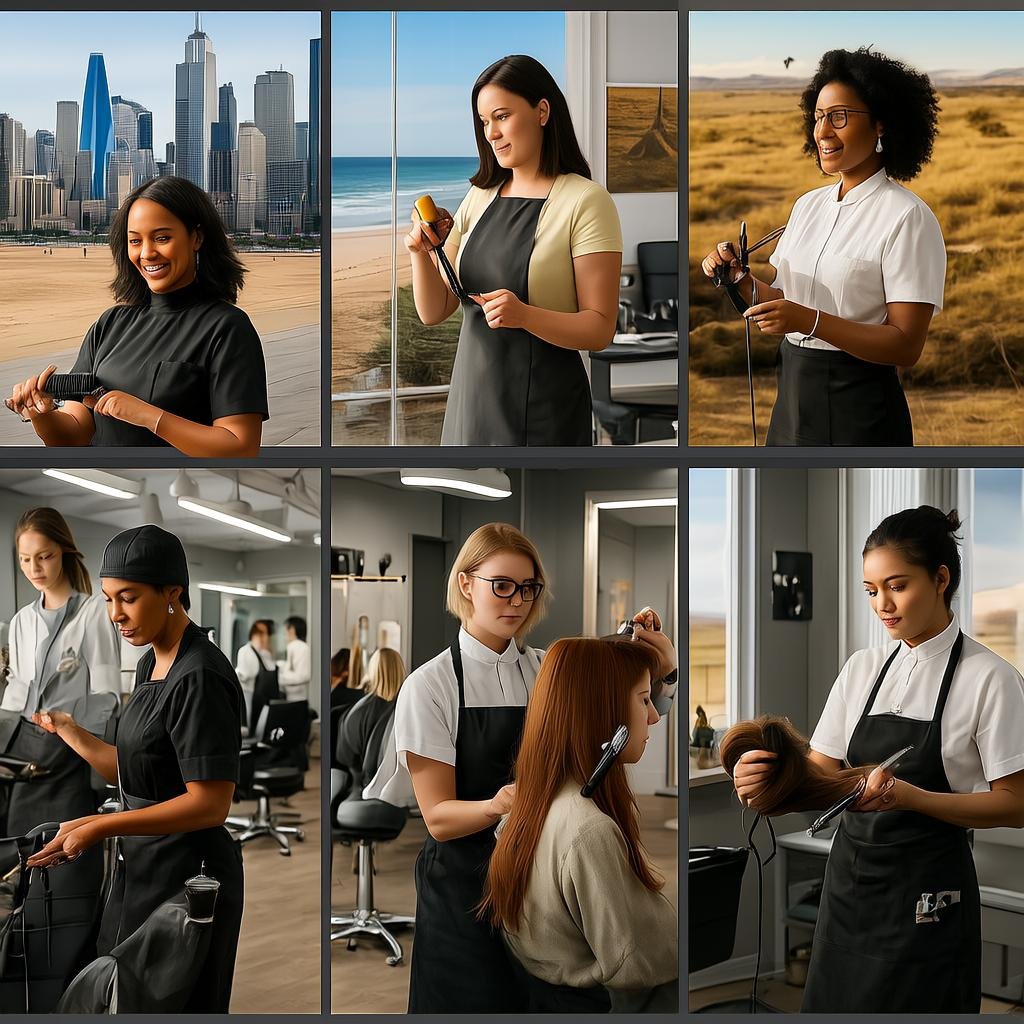Becoming a Licensed Hairstylist: What It Takes in Different US States

Content
Pursuing a career as a licensed hairstylist can be an exciting and rewarding path for those passionate about beauty and creativity. However, the journey to obtaining your license varies significantly across the United States, with each state maintaining its own set of requirements, regulations, and standards. Understanding these differences is crucial for aspiring hairstylists planning their career path.
The Foundation: Common Requirements
While specific requirements differ by state, most jurisdictions share several fundamental prerequisites for hairstylist licensing:
- Age requirement (typically 16-18 years old)
- High school diploma or GED
- Completion of a state-approved cosmetology program
- Passing scores on both written and practical examinations
- Background check and fingerprinting
The real variations emerge in training hours, curriculum focus, and examination processes.
Training Hours: A Wide Range of Commitment
The most significant difference between states is the required training hours. These can range from relatively modest requirements to intensive, career-focused programs:
Lower Hour Requirements (1,000-1,200 hours):
States like Colorado (1,200 hours) and Florida (1,200 hours) fall into this category, making them attractive for those seeking a quicker entry into the workforce.
Moderate Hour Requirements (1,500-1,600 hours):
Many states, including Texas (1,500 hours) and California (1,600 hours), require this level of training, providing a solid foundation while maintaining reasonable completion timelines.
Higher Hour Requirements (2,000+ hours):
States like New York (2,100 hours) and Michigan (2,200 hours) demand extensive training, reflecting their commitment to comprehensive skill development.
State-Specific Variations
California: Rigorous Standards
California maintains some of the most stringent requirements in the nation. Beyond the 1,600-hour training requirement, the state mandates specialized instruction in areas like hair coloring chemistry and scalp treatments. The practical examination is particularly challenging, requiring candidates to demonstrate advanced techniques under strict evaluation criteria.
Texas: Apprenticeship Opportunities
Texas stands out by offering multiple pathways to licensure, including a traditional cosmetology school route and an apprenticeship program. This flexibility allows individuals to choose between structured classroom learning or hands-on experience in a working salon environment, requiring 3,000 hours of supervised practice.
New York: Comprehensive Training
New York’s 2,100-hour requirement includes specific mandates for instruction in safety protocols, professional ethics, and business practices. The state also requires continuing education credits for license renewal, ensuring stylists stay current with industry trends and techniques.
Florida: Streamlined Process
Florida’s 1,200-hour program emphasizes efficiency without sacrificing quality. The state offers online course options for theoretical components and has streamlined its examination process, making it a popular destination for those seeking quicker licensure.
Financial Considerations
The cost of becoming licensed varies dramatically by state and chosen educational path:
- Tuition: Ranges from $8,000 to $20,000 depending on program length and institution type
- Exam Fees: Typically $50-$150 for written and practical examinations
- Licensing Fees: Vary from $25 to $200, with renewal costs generally lower
- Kit and Supply Costs: Additional $1,000-$3,000 for professional tools and products
Some states offer financial assistance programs or payment plans to help students manage these expenses.
Examination Process Differences
Most states utilize either the National Interstate Council of State Cosmetology Examiners (NIC) or state-specific examination services:
Written Examinations: Cover safety regulations, product knowledge, and state-specific laws
Practical Examinations: Require demonstration of cutting, styling, and chemical service techniques
Specialized Testing: Some states include additional assessments for specific services like braiding or advanced coloring techniques
Continuing Education Requirements
Many states now require licensed hairstylists to complete continuing education credits for license renewal:
- Required Hours: Typically 4-12 hours every 1-2 years
- Approved Topics: Safety updates, new techniques, product education, and business skills
- Delivery Methods: In-person workshops, online courses, and industry conferences
Choosing the Right Path
When selecting where to pursue your hairstylist license, consider:
- Career Goals: Different states may offer better opportunities in your desired specialty
- Financial Situation: Compare total costs including tuition, exams, and living expenses
- Timeline: Consider how quickly you want to enter the workforce
- Quality of Education: Research program reputations and job placement rates
- Reciprocity Agreements: Check if licenses transfer easily between states
The Future of Hairstyling Education
The industry continues evolving with trends toward:
- Online Learning Integration: Blending digital theory with hands-on practice
- Specialized Certifications: Additional credentials in areas like bridal styling or men’s grooming
- Sustainability Education: Training in eco-friendly practices and products
- Technology Integration: Digital portfolio development and social media marketing skills
Conclusion
Becoming a licensed hairstylist requires dedication, creativity, and a commitment to ongoing learning. While the path varies significantly across states, the fundamental goal remains the same: preparing skilled professionals who can safely and effectively serve their communities. By understanding your state’s specific requirements and preparing accordingly, you can embark on a fulfilling career that combines artistic expression with professional growth.
Whether you’re drawn to the fast-paced environment of 1,200-hour programs or prefer the comprehensive training offered by 2,000+ hour requirements, there’s a pathway that aligns with your goals and timeline. The key is thorough research, quality education, and a commitment to excellence that will serve you throughout your career in the dynamic world of professional hairstyling.
